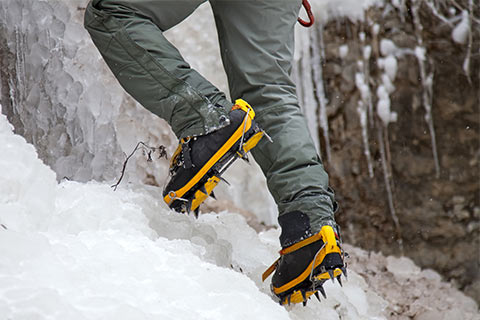
Whether you live in a cold-weather climate or you’re just vacationing in one, the winter season can be beautiful but also very dangerous, with snowy, icy walkways. Using caution when outside or traveling to wintery areas can help prevent ankle sprains and fractures from ruining your plans for enjoying the winter months.
- Wear the right shoes for the weather.
- High-heeled boots may be fashionable but not very practical on slippery surfaces. Shoes or boots with a low heel and traction soles provide a more secure footing. If you need to wear high-heeled shoes, change into them when you arrive at your destination.
- Check for slippery areas.
- Watch your step when exiting your car or walking out of a building. Take notice of any potentially icy areas. Keep your hands free to support and help provide balance in case you begin to fall.
- Keep areas near doorways well-lit and clear of ice and snow.
- Areas around your house, especially stairs and sidewalks, should be well lit so that you and your guests can better detect icy areas.
- Don’t ignore an injured foot or ankle.
- If you do suffer an injury, don’t delay in calling our office for prompt evaluation and treatment. In the meantime, the RICE method should be followed:
Rest: Stay off the injured (foot/ankle). Walking may cause further injury.
Ice: Apply an ice pack to the injured area, placing a thin towel between the ice and the skin. Use ice for 20 minutes and then wait at least 40 minutes before icing again.
Compression: An elastic wrap should be used to control swelling.
Elevation: The (foot/ankle) should be raised slightly above the level of your heart to reduce swelling.
Delaying treatment can result in long-term complications such as chronic ankle instability and pain, arthritis, or deformity. Remember, even if you are able to walk on the injured foot, you may still have a serious injury.